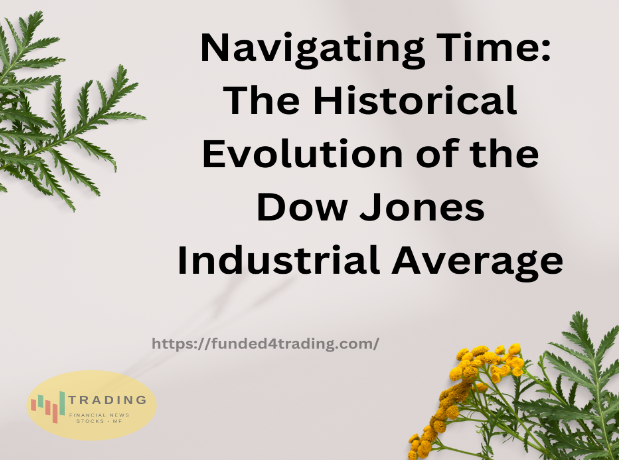Introduction:
In the vast realm of financial markets, few indices hold the same historical significance and global impact as the Dow Jones Industrial Average (DJIA). For over a century, this benchmark has served as a compass for investors, reflecting the ebb and flow of economic tides. In this exploration, we delve into the historical evolution of the Dow Jones Industrial Average, tracing its origins, milestones, and enduring relevance.
The Birth of a Benchmark:
The Dow Jones Industrial Average was born on May 26, 1896, thanks to the visionary minds of Charles Dow and Edward Jones. Initially comprising just 12 companies, the index aimed to provide a snapshot of the industrial sector’s performance, primarily focusing on manufacturing and production.
Early Challenges and Expansions:
In its infancy, the Dow faced numerous challenges, reflecting the economic uncertainties of the time. The index underwent its first major shakeup in 1916 when four companies were replaced, setting the precedent for future adjustments to adapt to evolving market dynamics.
The Roaring Twenties and the Great Depression:
The 1920s witnessed the Dow’s meteoric rise, symbolizing the exuberance of the “Roaring Twenties.” However, this period of prosperity came to a crashing halt with the stock market crash of 1929, signaling the onset of the Great Depression. The Dow’s journey through these tumultuous times encapsulates the index’s resilience and ability to weather economic storms.
Post-War Prosperity and Globalization:
The aftermath of World War II ushered in an era of unprecedented economic growth and globalization. The Dow evolved to include companies from various sectors, reflecting the changing landscape of the U.S. economy. The index transformed into a true barometer of the nation’s economic health, adapting to the complexities of an interconnected world.
Technological Revolution and the Dot-Com Bubble:
The late 20th century witnessed the advent of the technological revolution, and the Dow adapted once again. Companies in the tech sector found their place on the index, reflecting the shifting nature of the economy. However, this period was not without challenges, as the dot-com bubble burst in 2000, causing a temporary setback for the Dow.
Surviving the Financial Crisis:
The Dow faced one of its most significant challenges in the 2008 financial crisis. As global markets plummeted, the index experienced a sharp decline. However, the Dow showcased its resilience once more, gradually recovering and adapting to the new financial landscape.
Contemporary Landscape and Future Prospects:
In the present day, the Dow Jones Industrial Average stands as a diversified index of 30 blue-chip U.S. companies, spanning various sectors such as technology, healthcare, and finance. The index continues to adapt to evolving economic realities, providing investors with a reliable gauge of market performance.
Conclusion:
The Dow Jones Industrial Average’s journey through time is a testament to its enduring relevance and adaptability. From its humble beginnings in the late 19th century to its current status as a global benchmark, the Dow has weathered economic storms and embraced change. As we celebrate its historical evolution on its 1-year birthday, we acknowledge the Dow’s role as a guiding force in the world of finance, steering investors through the ever-changing seas of the global economy.

